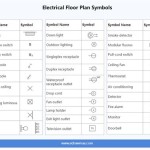Farmhouse Table DIY Plans
Farmhouse tables evoke a sense of rustic charm and provide a gathering place for family and friends. Building a farmhouse table is a rewarding project for DIY enthusiasts of all skill levels. This article offers guidance and considerations for individuals planning to undertake such a project.
The first step in building a farmhouse table is choosing the right plan. Many free and paid plans are available online and in woodworking magazines. These plans vary in complexity, size, and style. Selecting a plan that aligns with one's skill level and desired aesthetic is essential. Beginners might opt for simpler designs, while experienced woodworkers may choose more intricate plans incorporating advanced joinery techniques.
Once a plan is selected, the next step involves gathering the necessary materials. Most farmhouse tables are constructed from wood, typically hardwoods like oak, maple, or pine. Reclaimed wood adds character and a unique history to the piece. The chosen plan will specify the required lumber dimensions and quantities. Beyond lumber, essential materials include wood screws, wood glue, sandpaper, wood stain or paint, and a protective sealant.
Acquiring the right tools is crucial for a successful build. Essential tools include a measuring tape, saw (circular saw, miter saw, or handsaw), drill, clamps, sanding block or power sander, and safety glasses. More complex plans may require additional specialized tools such as a router or jointer. Ensuring tools are sharp and in good working condition promotes accuracy and safety.
Before beginning construction, carefully review the chosen plan, familiarizing oneself with each step. Preparing the lumber involves cutting the pieces to the specified dimensions. Accurate measurements and cuts are essential for a well-fitting and structurally sound table. Marking the wood clearly before cutting helps prevent errors.
The construction phase begins with assembling the tabletop. This typically involves joining the individual planks edge-to-edge to create a solid surface. Different joinery methods can be employed, including dowel joints, biscuit joints, or pocket screws. The chosen method will depend on the plan and the builder's skill level. Clamps are essential for holding the pieces together securely while the glue dries.
After the tabletop is assembled, the next step is to attach the legs or base. Common base designs include pedestal bases, trestle bases, and standard four-leg bases. The plan will specify the method for attaching the base to the tabletop. Ensuring a strong and stable connection is crucial for the table's overall durability.
Once the table is assembled, the next stage is sanding. Sanding smooths the wood surface, removes any imperfections, and prepares the wood for finishing. Starting with coarser grit sandpaper and progressively moving to finer grits achieves a smooth, professional finish.
Finishing the table involves applying stain or paint and a protective sealant. Stain enhances the natural beauty of the wood, while paint offers a wider range of color options. Allowing ample drying time between coats is crucial for a durable and attractive finish. A sealant protects the wood from moisture and wear, extending the table's lifespan.
Building a farmhouse table requires attention to detail and patience. Following the chosen plan carefully and taking accurate measurements are key to a successful outcome. Understanding the different types of wood, joinery methods, and finishing techniques allows for informed decisions and a customized final product.
Safety precautions are paramount throughout the entire process. Wearing appropriate safety gear, such as safety glasses and a dust mask, protects against potential hazards. Using tools correctly and following manufacturer instructions minimizes the risk of injury.
Beyond the provided plans, customization options abound. Modifying leg styles, incorporating decorative elements, or adjusting the table's dimensions allows for a truly unique piece. Consider the existing décor and personal preferences when exploring customization options.
Regular maintenance ensures the longevity of the farmhouse table. Cleaning the table with a damp cloth and mild soap removes dust and spills. Reapplying the sealant periodically maintains the protective barrier and preserves the finish. Addressing any minor repairs promptly prevents further damage.
Building a farmhouse table is a fulfilling endeavor that results in a beautiful and functional piece of furniture. Careful planning, accurate execution, and attention to detail contribute to a successful project and a cherished addition to any home.

Farmhouse Table Updated Pocket Hole Plans Ana White

Diy Farmhouse Table Love Grows Wild

Rustic Farmhouse Table With Breadboard Ends A Free Diy Plan Edhart Me

Diy Farmhouse Table And Bench Honeybear Lane

Farmhouse Table Plans To Build How A Diy

Diy Farmhouse Kitchen Table Projects For Beginners

Diy Farmhouse Table Love Grows Wild

How To Build A Farmhouse Table

Diy Small Farmhouse Table Plans And Tutorial

How To Build A Farmhouse Table And Benches








